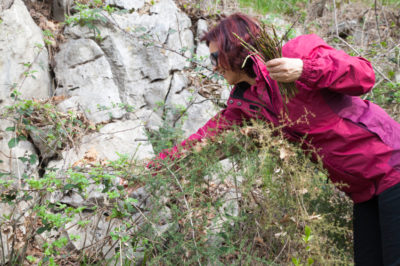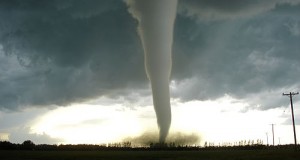In today’s uncertain world, you never know when you may be caught in a situation where there are no grocery markets, no farms, and no homes for as far as the eye can see. You check your pockets and only find some spare change and a few meager crumbs. Now what?
When it comes to survival, the very thing that we have come to value so much (money) suddenly becomes worthless. What does have value are food and water. Plants found in the wild can provide our bodies with all of the essential nutrients that we need in order to sustain ourselves and survive, but the challenge is identifying and finding the plants that aren’t poisonous and that won’t be harmful to our bodies. In this article we’ll talk about what wild plants you should eat, which you should avoid, and how to tell which is which.
General Rules For Plants To Avoid Consuming
More important than learning which plants are edible is to remember some general guidelines about which you should avoid. Below is a list of features that, if seen in a wild plant, will indicate that a plant is generally inedible:
- Any plants that are pods that contain beans, seeds, or bulbs inside
- Any plants that have a discolored or milky colored sap
- Any plants with thorns, fine hairs or spines
- Any plants that have leaves displaying a three-leaved growth pattern
- Any grain-headed plants with pink, purple, or blackish spurs
- Any plants that have almond-scented leaves or almond-scented woody areas
- Any plants that have a carrot, dill, parsley or parsnip-like foliage
- Any plants that have a notable bitter or soapy taste
- Any plants that are showing signs of decay or fungal growth
When in doubt, the best thing to do is to avoid consuming the plant altogether. Alternatively, you can perform what is generally referred to as the “Universal Edibility Test.”
Proper identification of plants can mean the difference between survival and death…
The Universal Edibility Test
Though the steps of the Universal Edibility Test may differ slightly from expert to expert, these are the general guidelines:
- When testing the plant, test only one part of it at a time
- Take the plant apart, separating it into its five basic components: roots, stems, leaves, buds, and flowers
- Smell the plant and check for any acidic or strong odors
- Don’t consume the plant for 8 hours before you begin the test
- While waiting out the 8 hours to consume the plant, test the plant for contact poisoning. You can easily do this by taking the plant and placing a piece of it on the inside of your wrist or elbow. Allow 15 minutes to elapse to see if you have a reaction
- Make sure that, during the testing period, you drink only purified water and drink or consume nothing else
- Choose a small part of the plant and prepare it in the way that you decide to eat it (i.e. raw or boiled)
- Before you place the small part of the plant in your mouth, touch a very small part of that plant to your lip. See if you have any burning or itching sensations. Wait 3 minutes to see if there’s a reaction.
- If you don’t have a reaction after 3 minutes have passed, then place that plant on your tongue for 15 minutes
- If there’s no reaction after 15 minutes, chew and hold it in your mouth for 15 minutes. Make sure that you don’t swallow the plant.
- If you don’t have any itching, burning, stinging or irritation, swallow the food.
- Wait 8 hours to see if you suffer any negative side effects. If you do have any negative side effects, force yourself to vomit and drink plenty of water to help cleanse your system
- If after the 8 hours you don’t suffer form any negative side effects, eat ¼ cup of the plant and wait another 8 hours. Again, if you don’t have any negative side effects, then the part of the plant that you’re consuming should be safe for eating
It’s important to note that you treat each part of the plant separately from the other. Just because the leaves of the plant are edible doesn’t mean that the root or the flower is. Perform this very same test with every part of the plant that you plan on eating to ensure that it’s safe to eat.
Another consideration that must be made is that different people may have different reactions to different plants. Just as with any allergy, some individuals may be fine with a plant while others may suffer anywhere from mild to strong negative side effects from it. Each person in your party should test the plant separately and not depend on the test of another individual to qualify that it’s safe for them to eat.
Common Edible Foods Found In The Wild
Clovers (Trifolium)
Four leaf clovers are certainly lucky, but three-leaf clovers are just as lucky to anyone who’s looking to survive in the wild. Clover can be found on just about any continent and can be found in most grassy, open areas. They can be eaten raw, though they do certainly taste a lot better when boiled.
Dandelions (Taraxacum officinale)
Yes, that weed that we all tirelessly try to get rid of from our lawns is actually great for any survivalist’s diet. The great thing about dandelions is that they are plentiful and that the entire plant is edible, right from the flower down to the very root. The root tends to taste best when boiled, and the flower is a great garnish.
TIP: When eating the dandelions leaves, try to eat them while they’re young. Mature leaves tend to have a bitter taste, though if you have the ability to boil the leaves, boiling can reduce or even completely eliminate the bitter taste. Make sure you hold onto that boiled water – you can use it as a tea!
Green Seaweed (Ulva lactuca)
For those who may find themselves trapped on a deserted island, this one’s for you. Green seaweed can be found in oceans all over the world and makes for a very tasty soup or salad. Once you pull out the green seaweed, simply rinse it with fresh water (if you have any nearby) and allow it to dry.
TIP: Kelp (Alaria esculenta) can also be found in the ocean, often in the same area as green seaweed. It’s a fantastic source of many nutrients such as folate, lignans, and vitamin K.
Plantain (Plantago)
This plant has been used for thousands of years as both a food source and as an herbal remedy. Loaded with vitamin A, calcium, and vitamin C, it’s an ideal food to include in your diet should you ever find yourself lost in the wild.
Plantains can typically be found in damp areas such as bogs and marshes, though they can also be found up in the mountains and other alpine areas. Try to find leaves that are young as mature leaves tend to have a rather bitter taste. If only mature plants are available, boil the leaves and keep the water as a tea.
Additional Tips
- Any foods that are growing near roadsides should be avoided due to the likelihood that they have been contaminated by exhaust emissions
- Plants growing in water may be growing in contaminated water or water that contains parasites. As a precaution, boil these plants before consuming
- NEVER eat mushrooms unless you are very familiar with mushrooms and are able to identify them. Several poisonous mushrooms cause irreparable damage to the central nervous system, and symptoms may not show up until several days after the mushroom was consumed
- When testing plants, choose plants that are available in abundance. You don’t want to waste your time testing a plant that will only satisfy you for a couple of days
 Off The Grid News Better Ideas For Off The Grid Living
Off The Grid News Better Ideas For Off The Grid Living





